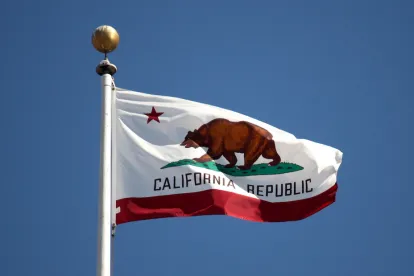The significant disruptive change expressed by panelists from the Bay Area and Southern California in the latest Allen Matkins/UCLA Anderson Forecast California Commercial Real Estate Survey is an extension of the trends from the past three years. The current view is that retail properties will be generating significantly lower returns in 2023 compared to the middle of 2020.
The current recession has tripled down on the struggles retail already faced during the previous economic expansion. First, household loss of income and shelter-in-place policies reduced current demand for brick-and-mortar retail. Second, the inability to physically frequent many retail establishments created a new set of online shoppers. Third, increases in the savings rate on the part of households in response to the recession portends less consumption. To be sure, some activities will return, particularly personal services and experiential retail. However, marginal properties will not find tenants willing to pay sufficient rent to keep the properties in the retail space.
Retail market industry leaders, Rhonda Diaz Caldewey of Jones Lang LaSalle and Ivan Gold of Allen Matkins, discuss what lies ahead for this sector of the California commercial real estate market.
1. WHAT TYPE OF RETAIL PROPERTIES WILL SURVIVE POST-PANDEMIC GIVEN THIS MARKET SECTOR WAS ALREADY STRUGGLING WELL BEFORE THE CRISIS?
Diaz Caldewey: The pandemic is accelerating trends that we were already seeing for some time, such as smaller footprints, movement to neighborhood streets, and store openings that disregard traditional site selection criteria. Off-ground floor locations, and locations surrounded by non-retail, such as a warehouse district will continue. The dismantling of the site selection tool box is essential for moving forward. Brick-and-mortar data points that worked for yesterday’s locations are no longer applicable for tomorrow’s great sites.
-
Neighborhood streets and centers will continue to grow in appeal as the work-from-home advantages find a balance, stick, and stay post-pandemic. As a result, daytime demand will increase for local neighborhood retailers and restaurants that formerly relied on nights and weekend traffic.
-
Malls and department stores of mid-priced apparel and accessories retailers were already struggling in the face of shifting tired environments that offered draining shopping experiences and online convenience. Their accelerated closures will find new life in redevelopment and adaptive reuse. Meanwhile, the "A" centers will come out of the recession refreshed and revitalized. When a COVID-19 vaccine arrives, centers that offer a welcoming community that embraces the new consumer psyche with an uplifting design that offers a sense of belonging, will benefit from the pent-up demand for new and vibrant retail.
-
Restaurants were already entering a new era of disruption with ghost kitchens, meal kits, and meal delivery apps. Unfortunately, many of the locally-owned restaurants that give a city its unique cultural flavor will morph into a simpler menu and new format that goes back to basics. Many will abandon the need for critic stars and press accolades, and put total focus on loving, feeding, and pleasing their customers. Those that don’t have the resources to keep going will close.
-
Neighborhood streets with character and nostalgia will increase in value and continue to flourish. These storefronts will remain in high demand, however, rents will not necessarily increase, and may even decrease as revenue projections remain tempered.
-
As open-air centers are often populated by essential and value-oriented retail, they are particularly well-positioned to weather the COVID-19 crisis and a recession. They provide adequate space for food and beverage providers, and community events that allow safe socializing.
Gold: The retailers that will have the best chance of surviving post-pandemic, and beyond, are those that know their customers and understand their shopping patterns, and those that rely on quality and value rather than trends who already have loyal followings. Essential shopping retailers will continue to be profitable. Groceries, drug stores, convenience stores, dollar/discount, home improvement, office supplies, furniture/home furnishings, and electronics all fall within that category. Also, big box stores and warehouse clubs will continue to see a steady customer base. Off-price apparel and houseware retailers should have a fighting chance given their price-conscious products. On the other end of the spectrum, luxury brands will still own a piece of the marketplace.
2. WITH THE ANTICIPATION OF VACANT STORE FRONTS AND RETAIL CENTERS, HOW WILL THAT SPACE BE CONVERTED INTO PROFITABLE REAL ESTATE?
Diaz Caldewey: This will be a long term challenge for property owners and their advisors. There is not a single correct answer to this question. Each property has its own highest and best use and caters to different demographics and shifting demographics. Right now, there is a trend of moving out of high-density environments, which will affect the surrounding retail in those areas. New residents will enter, and retail concepts will cater to the new demand. Some retail centers and shop spaces would make sense as office space, while others can be redeveloped into entertainment centers, eSports arenas, hotel, or multi-family. There is also a growing demand for last-mile warehouse delivery space, and we will see some of this in abandoned department stores and malls.
Gold: Do not underestimate the resilience and ingenuity of the commercial real estate sector. Big box locations can “pivot” to other uses ranging from logistics and distribution facilities to churches. I recently heard of interest by a casino in a vacant big box space. In some markets, retail properties will be redeveloped to mixed-use or residential uses. I continue to be pleasantly surprised by news of expiring leases (or rejected leases in bankruptcy cases) that have replacement tenants “in waiting,” even in current market conditions.
3. "EXPERIENTIAL" HAS BEEN A COMMON TERM WHEN DEVELOPING OR REDEVELOPING RETAIL CENTERS – COMBINING DINING, ENTERTAINMENT, AND OTHER LIFESTYLE AMENITIES TO THE SHOPPING EXPERIENCE. HOW WILL THAT APPROACH FURTHER EVOLVE GIVEN THE NEW "SOCIAL DISTANCING" REQUIREMENTS?
Diaz Caldewey: Developers will need to think long-term, envisioning how projects can function with or without social distancing in place. Everything will be touchless. New technologies that utilize disinfecting lights, materials, and enhanced air purification circulation will highlight those centers that give shoppers a level of confidence to relax and indulge, even after a vaccine arrives. We will see a lot more technology and AI integrated into the top retail centers. More robots! The psychology of the COVID-19 experience will not leave us overnight, and linger in our habits out in public for a long time. Consumers will be uplifted and feel joy if they feel safe. Cultural gifts, such as art, live music, dance, and theater will be revered and treasured more than ever.
Gold: Experiential retail real estate sectors will stagnate (at best) well into 2021. There is clearly pent-up demand for dining and entertainment options, and outdoor seating for restaurants in many markets will be key. Reconfiguration of public spaces in shopping centers to facilitate greater outdoor space for restaurants can be expected. There will undoubtedly be a certain amount of contraction in the dining, entertainment, and other experiential sectors for the next several years, particularly independent operators.
4. MOST RETAILERS AND RESTAURANTS NOW OFFER CURBSIDE PICKUP. DO YOU SEE THIS AS A PERMANENT BUSINESS MODEL? AND IF SO, WILL RETAILERS NEED MUCH LESS SPACE TO OPERATE? HOW WILL THIS IMPACT GROUND-UP DEVELOPMENT MOVING FORWARD?
Diaz Caldewey: Pre-COVID-19, forward thinking food and beverage operators were already looking to reformat to smaller dining areas, and larger kitchen spaces to accommodate increased delivery and pickup. Those offering curbside pickup will most likely continue it, provided the return of busy trafficked streets allow it. The drive-in looks like the best real estate idea ever right now, and yet cities continue to fight them. Hopefully, that will change allowing for more convenient food pick up post-COVID-19, and less congestion headaches from searching for parking. Developers will seek to accommodate a convenient consumer food and beverage pick-up in the new retail development frontier.
Gold: Just as omnichannel has been critical to many brick-and-mortar retailers (i.e., the ability to order online and pick-up or return in a store, the ability to look at merchandise in a store and then order online, either from the store or from home), the curbside pickup/take-out option for restaurants is likely here to stay. While providing convenience and variety during social distancing and other operating restrictions arising from COVID-19, curbside pick-up from restaurants has emerged as an alternative to popular meal kits and expanded pre-prepared meal offerings from grocers that were popular in 2019. The curbside pick-up option has existed pre-COVID-19 for the last several years for a number of retailers (Staples and Best Buy immediately come to mind) and this convenience will continue. The key is to give customers multiple ways to purchase your product. Any potential loss in retailing selling space or restaurant seating area will likely be offset by the corresponding expansion of the “back of the house” to facilitate online ordering and curbside pickup.
5. WHAT ARE THE KEY FACTORS THAT WILL GIVE RETAIL A FIGHTING CHANCE OVER THE NEXT THREE YEARS AND BEYOND?
Diaz Caldewey: The great human spirit of survival and entrepreneurship that will create new concepts, technologies, and eventually new storefronts from their innovation. We are seeing new concept ideas already. “Essential” retail will shine through this period.
-
Home upgrade timing is now. As shoppers eat out less and cook in more, they are sprucing up their kitchens, throwing away old knife sets and cocktail shakers and upgrading to the accessories they’ve always wanted. Home and kitchen stores will benefit from that.
-
Less is more. Decluttering was a passion during shelter-in-place, and doing that felt good to consumers. The trend of buying a few items of high quality rather than lots of things will continue.
-
Technology is a necessary investment. Many climbed up the technology learning arc for survival during the pandemic, and those already adept dived even deeper. It is an essential.
-
Value retail will also outperform. As in past recessions, shoppers adopt a recessionary mindset and even those who are not suffering financially will look for value and understatement in their purchasing.
Gold: There are many, ranging from the early development of a COVID-19 vaccine, to the availability and duration of government stimulus and benefits, to providing as many ways as possible for customers to buy your product. There will be a “shake out” period where the aggressive rent relief “asks” by distressed retailers and their brokers/consultants become more realistic and acceptable to landlords. We can expect increased use of percentage rent and fixed CAM charge tranactions to create flexibility for both landlord and tenant as part of lease restructuring and new transactions in the short term.
Prior to COVID-19, the most vulnerable retailers (as evidenced by their Chapter 11 filings) were those that were the most leveraged. The de-leveraging of a retailer’s balance sheet is as important to its survival as is its product mix, social media presence or the quality of its product offerings.
The strength and continuity of consumer demand will be most critical. Most retailers that were in Chapter 11 proceedings during the stay-at-home phase of the COVID-19 crisis have seen sales following re-opening in excess of projections (e.g., J.C. Penney, Pier 1 Imports, Stage Stores, Tuesday Morning).
Many “mom-and-pop” independent retailers, restaurants, and service providers (e.g., hair salons, barber shops, nail salons) are seriously challenged in the near term (remainder of 2020) and into 2021, and may need some form of direct state or federal assistance to survive. The current state eviction protections are “masking” the degree of distress in these categories.
Rhonda Diaz Caldewey, Executive Vice President of F&B, Hospitality, Entertainment Retail at Jones Lang LaSalle contributed to this article.



 />i
/>i

